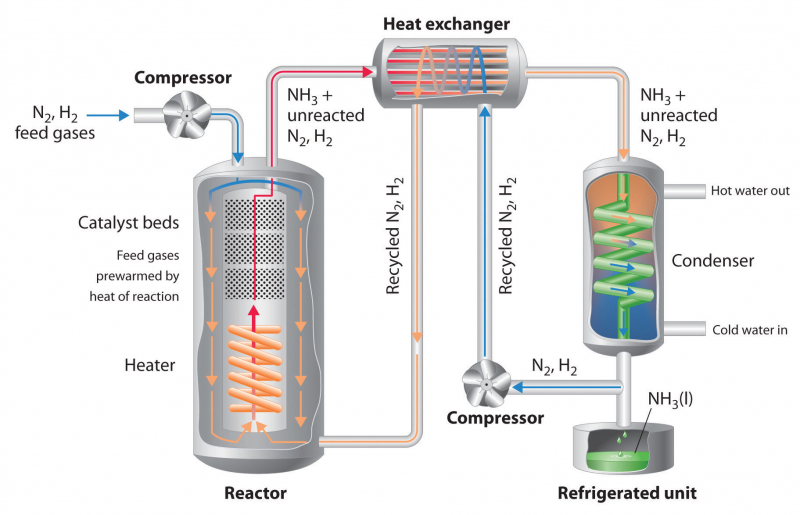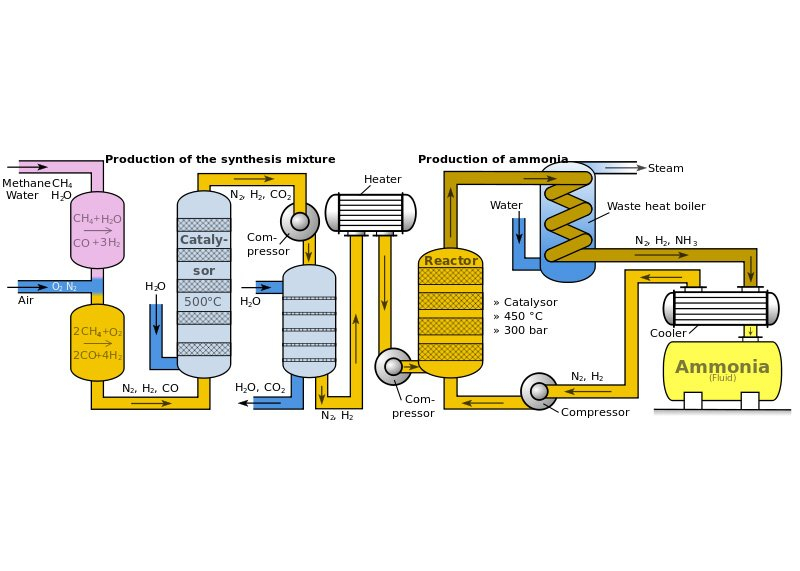The Haber-Bosch Process
The Haber-Bosch process has been referred to as one of chemistry's most significant inventions. It is today an extensively used commercial process that combines nitrogen and hydrogen to produce ammonia, which is then used to generate products like fertilizers. It was developed in 1909–1910 by German scientists, after whom it was named.
Since its inception, the method has generated a worldwide expansion of various fertilizer kinds, which has led to a dramatic increase in global population. It was created in the first decade of the 20th century by German chemists Fritz Haber and Carl Bosch, and is named after them. It was created in the first decade of the 20th century by German chemists Fritz Haber and Carl Bosch, and is named after them.
Due to the fact that nitrates were a crucial component in the creation of weapons, the Haber-Bosch process was crucial to the German war effort during the First World War. Due to a British blockade, which prevented Germany from accessing the world's nitrate reserves, the procedure gave them a special domestic source of food and weapons to last for more than four years.












